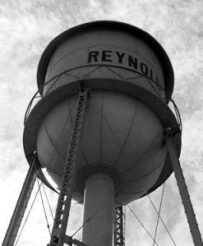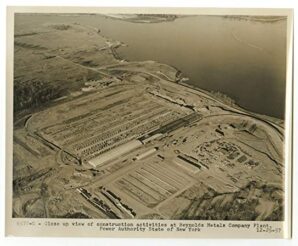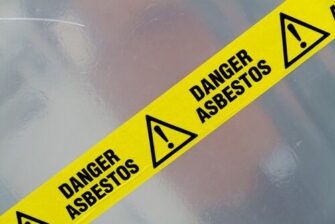Reynolds Massena
You may be entitled to receive compensation. Mesothelioma and lung cancer victims & their families have been awarded over $1 million+ from easy access to funds. Call us today to apply.
Over the past 20 years, we've helped 1,000s of families claim the compensation they deserve with no upfront costs to them.

Photo Credits
Author: Valerie Everett
Licensed under creative commons
Massena, a city in New York just across the U.S. – Canadian border, has been an important location for U.S. aluminum production since the turn of the twentieth century. Built along the St. Lawrence river, the site was chosen in part because of the excessive energy needs of aluminum production – a problem the aluminum industry solved in large part by taking advantage of hydroelectric power.
Following the sale of Reynolds to ALCOA, the former site of the Reynolds aluminum plant in Massena is still in operation as ALCOA East. Workers employed at the site prior to the 1990s are at risk of developing mesothelioma, a highly aggressive cancer most often found in the lining of the lungs. This is due to the use of asbestos at Reynolds. Asbestos is the only known cause of mesothelioma, and despite knowing this since the 1920s, the companies that manufactured asbestos products never warned the public of its hazards.
Belluck & Fox, LLP mesothelioma lawyers have represented several former employees of Reynolds who developed mesothelioma as a direct result of exposure at the Massena plant. We are very familiar with the Reynolds Massena site, including the asbestos companies that sold asbestos-containing products and equipment to Reynolds. Our attorneys know the layout of the facilities and how workers were exposed to asbestos at this site. Clients we have represented from Reynolds include crane operators, furnace foremen, cast house workers, and laborers.
History
Table of Contents
 The Reynolds Metal Company was a prominent American producer of aluminum, founded in 1919 by Richard S. Reynolds, Sr. Prior to merging with Alcoa in 2000, Reynolds Metal stood as the third largest aluminum company in the world, and wielded major brand recognition among consumers for its main foil product, Reynolds Wrap.
The Reynolds Metal Company was a prominent American producer of aluminum, founded in 1919 by Richard S. Reynolds, Sr. Prior to merging with Alcoa in 2000, Reynolds Metal stood as the third largest aluminum company in the world, and wielded major brand recognition among consumers for its main foil product, Reynolds Wrap.
Founded under the name U.S. Foil Company, the business quickly rose to success. As Reynolds Sr. was the nephew of tobacco magnate R.J. Reynolds, the original market for the company’s foil was cigarette companies to use in their packaging.
Constructed in 1958, the Reynolds aluminum foundry in Massena, NY remains an active aluminum production facility, now operating under the ownership of ALCOA. The site used a great deal of asbestos in the equipment and materials used in the plant. Asbestos, a fibrous mineral used in many industrial and consumer products prior to the 1980s, is a highly dangerous carcinogen. It remains the only known cause of the aggressive and deadly cancer known as mesothelioma.
Use of Asbestos at Reynolds Massena
Aluminum is rarely found in nature in its pure elemental form, and is somewhat difficult to extract from ore. In the late 1800s, a technique called the Hall-Héroult process was developed address these problems, and remains the standard extraction method used by modern aluminum plants. It is an energy-intensive process, which utilizes high levels of both electricity and heat. This means that insulation was used in nearly all stages of production.
South of the St. Lawrence River and just a few miles east of the original Massena ALCOA plant, the former Reynolds facility harnessed hydroelectricity to address its constant need for power. The Hall-Héroult process involves dissolving alumina – aluminum oxide compounds such as bauxite – in molten cryolite at around 1000° C, then exposing this liquid to a high electrical current. This causes the pure aluminum to settle to the bottom of the mixture, where it is extracted and poured into molds. As mentioned above, this currently remains the only efficient method to mass-produce aluminum, but energy requirements per year are equivalent to that of a small city. This poses a number of problems, the most pressing of which is cost.
To make production profitable, aluminum companies often build plants adjacent to rivers, and dam these with large turbines to provide the plant with a local, self-generated power supply. The St. Lawrence River is an excellent source of energy for the Massena plant, and has allowed it to operate without the excessive cost of purchasing all electricity from a third party. However, workers tasked with maintaining these hydroelectric systems were placed at risk due to the extensive use of asbestos in the electrical equipment.
Asbestos was typically used anywhere excessive heat, electricity, and corrosion posed a concern. Thus, asbestos could be found in cement, gasket material, wire insulation, turbines, and other similar products.
Boiler rooms, which generate the heat, hot water, and steam used throughout the plant, were another location  where regular exposure to asbestos was common. Asbestos gaskets wherever metal joints needed tight seals, such as on gauges, pipes, valves, and pumps. These gaskets were typically cut from large asbestos sheets, which released fibers into the air during cutting. Pumps and valves also used packing, braided ropes of asbestos that are used to create seals.
where regular exposure to asbestos was common. Asbestos gaskets wherever metal joints needed tight seals, such as on gauges, pipes, valves, and pumps. These gaskets were typically cut from large asbestos sheets, which released fibers into the air during cutting. Pumps and valves also used packing, braided ropes of asbestos that are used to create seals.
During the regular maintenance or repair of this equipment, this asbestos needed to be scraped and wire brushed off of the metal, which created millions of loose asbestos particles. Packing had to be removed by the use of a special hook, which released asbestos fibers as it pierced the packing. Asbestos insulation was used on the surfaces of pipes, boilers, tanks, and other metal heating equipment. This would most often come as powder cement, which needed to be mixed with water before application. The water would disturb the dry asbestos and release much of the powder into the air as it was mixed in. The resulting slurry was often applied by hand, without tools or protective clothing, because workers had no idea that asbestos posed a threat to them.
The smelting area was where the process of extracting aluminum from ore took place. Here, large furnaces and crucibles were often lined with what is known as refractory, a non-metal substance meant to withstand extreme heat. Prior to the 1980s, asbestos was the most commonly used material for refractory cement. Calcination Kilns and Reduction Pots, vessels in which aluminum smelting takes place, were exposed to temperatures of up to 2000 degrees Fahrenheit, as well as massive impulses of electrical energy. These were insulated with asbestos.
Annealing, the process by which aluminum is gradually cooled to prevent stress fractures, utilized asbestos refractory. The ingot extrusion area, where aluminum was formed into ingots – blocks of aluminum in a uniform shape and weight – used asbestos too. Vessels called “hot tops,” devices used to collect impurities from the molten aluminum, were often made with asbestos. Soaking pits, areas where molten aluminum is spread out for slow cooling to reduce stress, also typically used asbestos insulation.
After the ingots were formed, a portion of the aluminum produced at Alcoa was brought to the fabricating area to be made into finished products for both industrial and consumer sale. Here, machines used to cut, polish, and assemble aluminum into finished products would often use asbestos as a brake material. Asbestos was also sometimes used an abrasive material for grinding and polishing metal. As mentioned previously, asbestos could also be found anywhere heat and corrosion was a concern, so welders and fabricators employed at the site were likely to have used asbestos heat shields, asbestos-taped tongs, and heat-resistant clothing made from asbestos.
 Construction projects at plants like Reynolds in Massena are very dangerous because of the asbestos materials used in the buildings themselves. Drywall, tiles, shingles, fireproofing spray, and insulation were all commonly made from asbestos prior to the 1980s. Construction was particularly dangerous because when asbestos materials crumble, as is common in construction projects, they become powdery and release into the air as invisible dust composed of millions of microscopic fibers. This dust is easily breathed and ingested by workers, which places these workers at very high risk of developing mesothelioma,lung cancer, asbestosis, and other asbestos-related diseases.
Construction projects at plants like Reynolds in Massena are very dangerous because of the asbestos materials used in the buildings themselves. Drywall, tiles, shingles, fireproofing spray, and insulation were all commonly made from asbestos prior to the 1980s. Construction was particularly dangerous because when asbestos materials crumble, as is common in construction projects, they become powdery and release into the air as invisible dust composed of millions of microscopic fibers. This dust is easily breathed and ingested by workers, which places these workers at very high risk of developing mesothelioma,lung cancer, asbestosis, and other asbestos-related diseases.
Not even the families of workers at the Reynolds plant were safe from the hazards of asbestos, thanks to what is known as “take-home” exposure. After spending long days in the asbestos-contaminated environment, workers would return home with asbestos fibers clinging to their clothing, hair, shoes, and skin. When they showered or washed their clothes, these asbestos fibers were released into the house, and gradually built up over time. This placed these workers’ families at risk, and has resulted in many cases of mesothelioma in victims who may never have even set foot on a hazardous worksite.
Where Can Asbestos Victims Turn for Help?
Asbestos is the only known cause of mesothelioma. It was used in products that were sold without warnings or safety instructions, even though the asbestos manufacturers knew that it was a hazardous substance. People suffering from mesothelioma are victims of the asbestos industry – an industry that acted with an irresponsible disregard for the health and safety of the public.
It is critical to act quickly after being diagnosed with asbestos disease because the law limits the time in which victims may file a suit. Mesothelioma victims will have the best possibility of success when hiring attorneys who are already familiar with asbestos cases. Victims need lawyers who have successfully taken on the asbestos manufacturers and know the ways in which people were exposed.
Our reliable New York asbestos attorneys at Belluck & Fox, LLP have this experience: We have won over $1 billion from businesses that manufactured industrial and consumer asbestos products. Settlements from our firm can help your family cover medical expenses and other costs associated with the disease.
Belluck & Fox, LLP understands mesothelioma. Our asbestos attorneys will take extra care to address your specific needs, including in-home meetings. We will handle all the work on your case ourselves, and will not refer you to another law firm. You can visit our New York office and can be reached at 1-518-621-2699 or through our online contact form.
Associated Occupations
Other Asbestos Companies in New York
